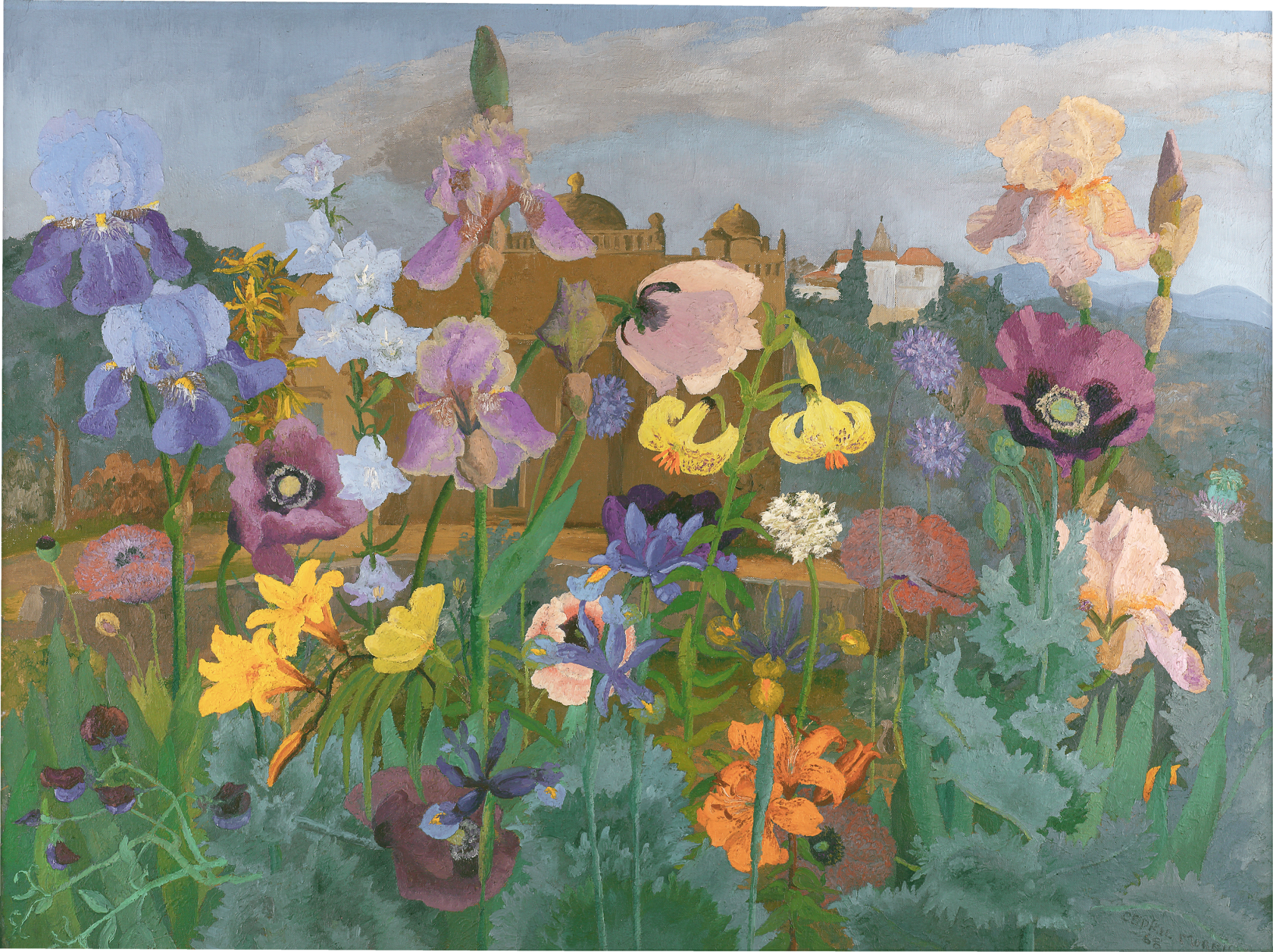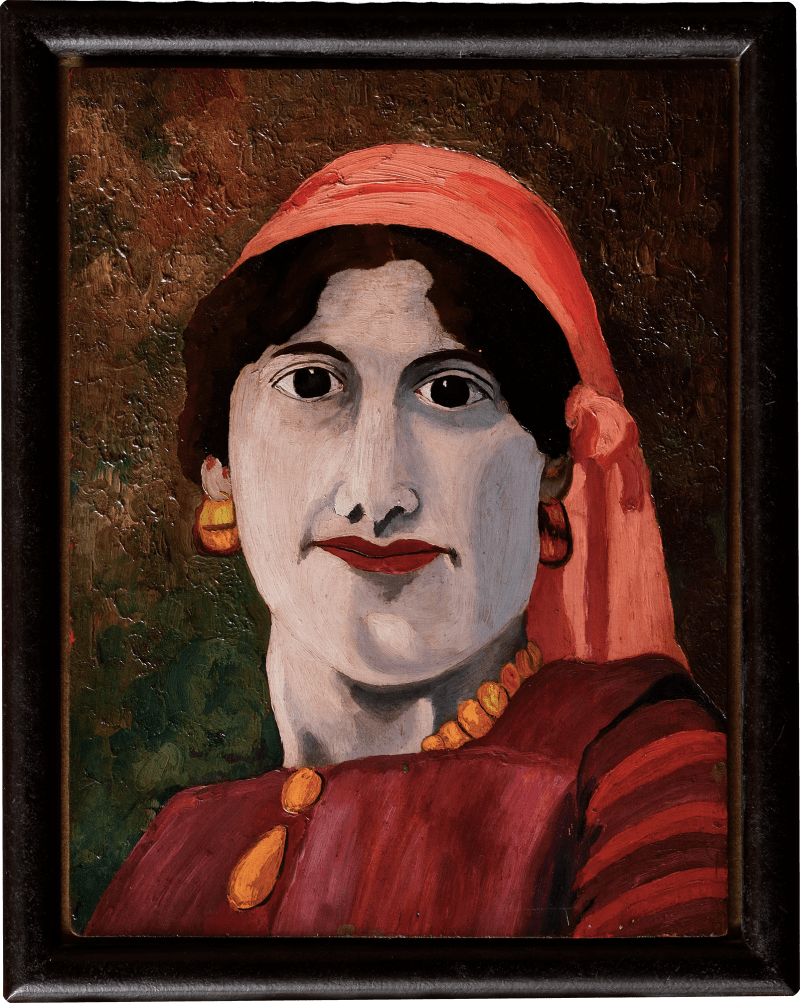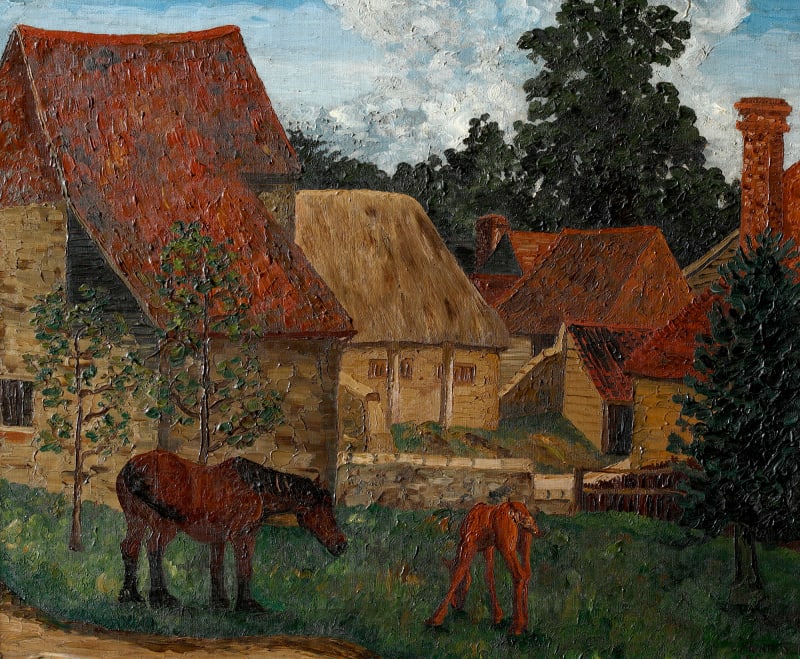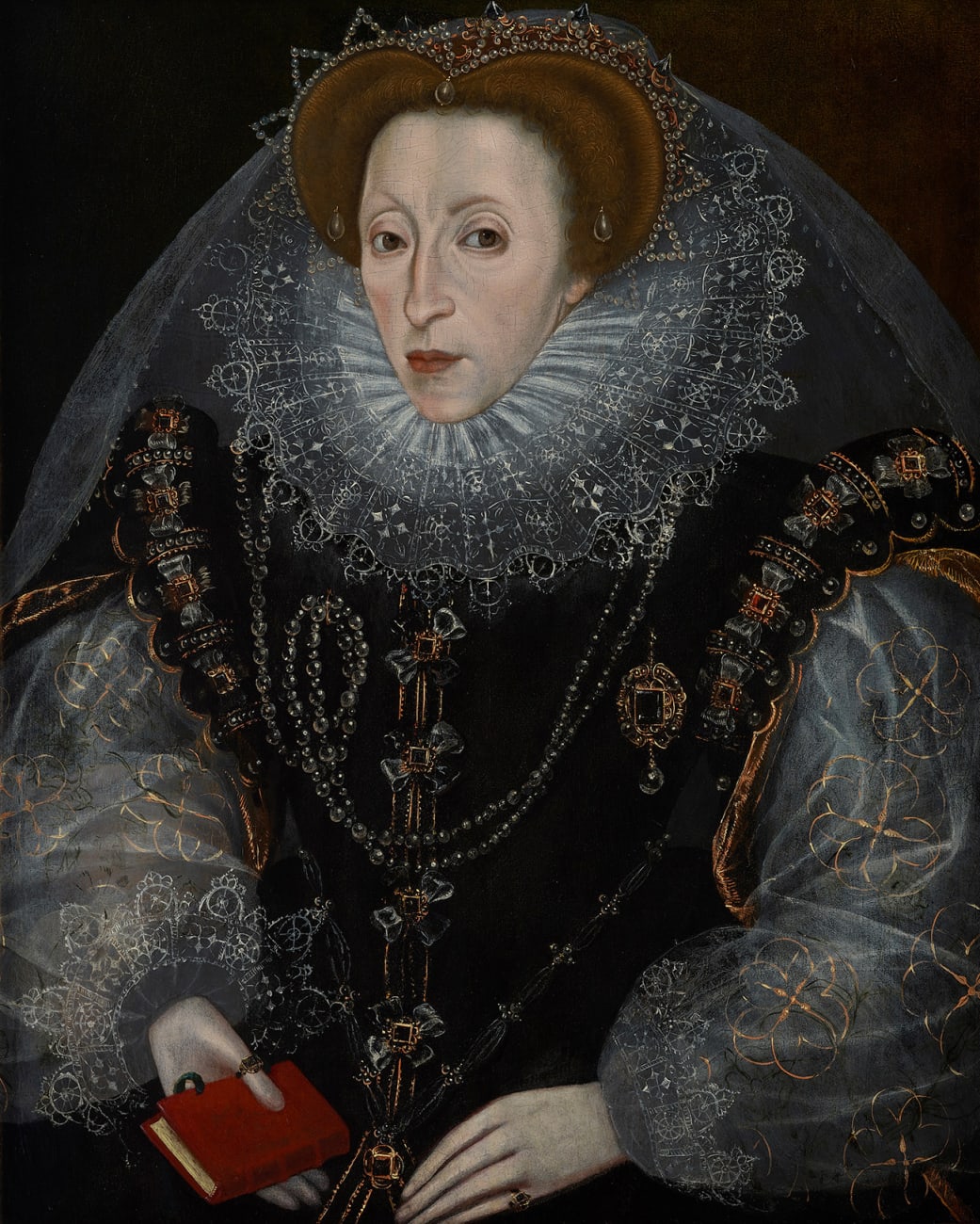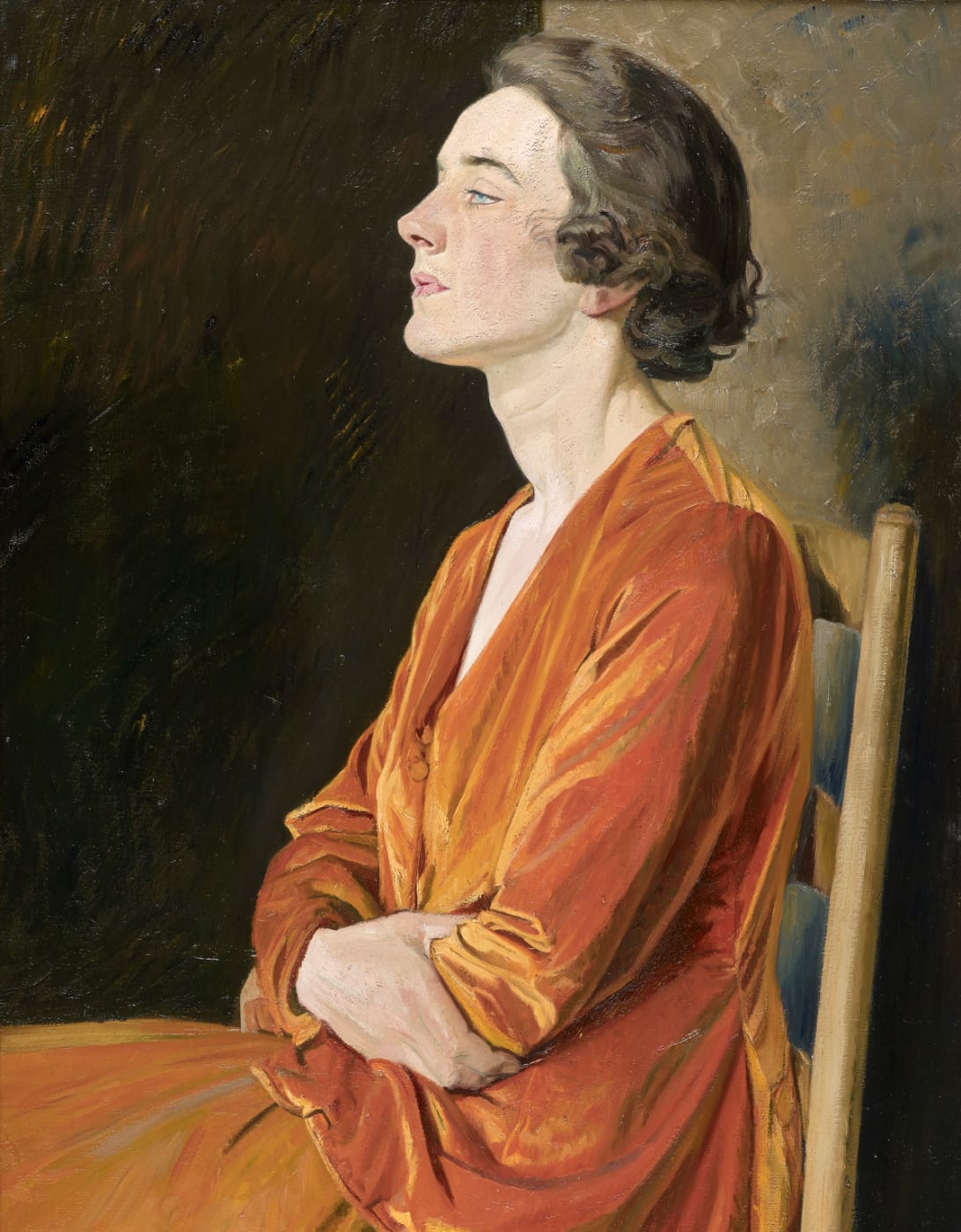Richard Morphet, curator of the major Cedric Morris retrospective at Tate, once said of Morris: “His flower pictures can only be by somebody who loves the natural world. His affinity with nature was extraordinary, plants to him had characters and his study of them inspired painters and gardeners alike.” Painted toward the end of Morris’ career, Flowers in a Portuguese Landscape reflects a lifetime’s knowledge of plants and painting, combining botanical precision with artistic exuberance.
Set against a luminous Portuguese backdrop, the foreground of this composition bursts with irises, poppies, sweet peas, and a profusion of Mediterranean flora. During his sojourns abroad, Morris would dig up wildflowers and bulbs to take back to Suffolk and plant alongside British species, creating the eclectic, painterly schemes for which Benton End became renowned. Many iris varieties native to Portugal inspired Morris’ breeding programme at home. Gifts from fellow plant enthusiasts enriched these displays further, including sweet peas collected in Sicily by artist plantsman...
Richard Morphet, curator of the major Cedric Morris retrospective at Tate, once said of Morris: “His flower pictures can only be by somebody who loves the natural world. His affinity with nature was extraordinary, plants to him had characters and his study of them inspired painters and gardeners alike.” Painted toward the end of Morris’ career, Flowers in a Portuguese Landscape reflects a lifetime’s knowledge of plants and painting, combining botanical precision with artistic exuberance.
Set against a luminous Portuguese backdrop, the foreground of this composition bursts with irises, poppies, sweet peas, and a profusion of Mediterranean flora. During his sojourns abroad, Morris would dig up wildflowers and bulbs to take back to Suffolk and plant alongside British species, creating the eclectic, painterly schemes for which Benton End became renowned. Many iris varieties native to Portugal inspired Morris’ breeding programme at home. Gifts from fellow plant enthusiasts enriched these displays further, including sweet peas collected in Sicily by artist plantsman John Nash, a variety still prized today for its poise, scent, and abundant flowering.
For the team now reviving Benton End’s garden, abundant flower paintings like this one are invaluable guides. They offer rare insight into Morris’ plant palette, his inspiration from foreign countries, and his instinctive style of combining forms, colours, and textures. Morris’ planting allowed for the self-expression of the species; boards and boundaries were not a prominent feature at Benton End, but rather a celebration of the wild and sprawling nature of each individual bloom he cultivated.
On loan from a private collection.
